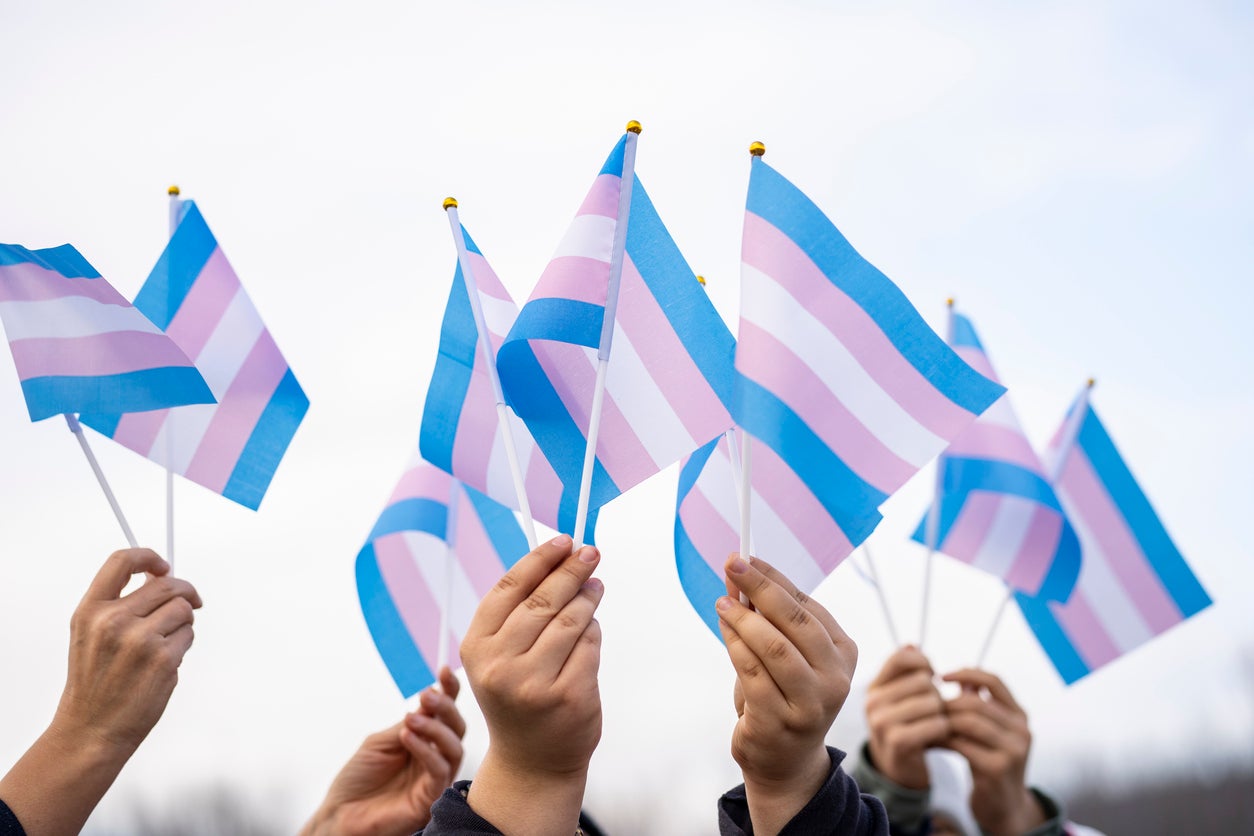The Independent's journalism is supported by our readers. When you purchase through links on our site, we may earn commission.
I ‘came out’ at school during Section 28 – trans kids will now face the same trauma
It chills me to think that 16-year-olds today might not have the same freedoms I did, writes Carrie Lyell, thanks to the government’s trans schools’ guidance – published today after months of infighting, which could put any young person who doesn’t conform to gender norms at risk


I was “out” to my friends at school before I was “out” at home. Not because I thought my parents wouldn’t be supportive, but because I needed time to be able to understand myself before I could explain it to them.
While my teachers didn’t acknowledge directly what was going on – and couldn’t, thanks to Section 28 – they would shoot a fierce look at those who called me “dyke” in the corridors, and opened their classrooms at break times so I could hang out with friends away from the insults.
This gentle support gave me the time and space I needed to figure out who I was, and a few months later, I was able to have that conversation with my mum and dad. To come out in my own way, in my own words, in my own time.
It chills me to think that 16-year-olds today might not have the same freedom, thanks to the government’s trans schools’ guidance, published today after months of infighting, which could put any young person who doesn’t conform to gender norms at risk.
Schools have been asking for years for support from the government on how to better support trans young people, but this guidance is not that. Instead, it is a campaigning tool that will cause more bullying and exclusion of trans young people. It is unethical, unworkable and absurd.
The facts on the ground are clear: 64 per cent of trans students are bullied for being trans, 79 per cent feel their gender identity is a barrier for them to take part in sport and PE, and trans students are twice as likely to say they worry about their mental health on a daily basis.
In today’s classrooms, trans young people are disproportionately targeted and ostracised. Unfortunately, the government’s discriminatory guidelines completely disregards the reality on the ground by falling woefully short of reflecting best practices according to inclusive educators, supportive parents, or the needs of trans young people themselves.
Evidence shows that affirming a young person’s gender reduces absenteeism and boosts self-esteem. It is a small act that can have a transformational impact on a young person’s mental wellbeing. Yet, despite this, the guidelines insist teachers are “not compelled” to address students by their chosen pronouns or name. Not only is this completely unacceptable – intentionally misgendering an individual could trigger feelings of dysphoria which has a negative impact on a young person’s psychological and emotional wellbeing – it also fails to comply with the EHRC’s technical guidance for schools which constitutes it as discriminatory.
Schools have a duty to provide a supportive and inclusive environment for all students, including facilities that enable trans young people to feel comfortable. Since 2013, schools in Brighton & Hove have followed trans inclusive guidance which sees trans pupils using the toilets and changing room facilities that align with their gender without any issue. They have found no evidence that a trans young person in a single sex facility presents any more of a threat than any other member of their peer group.
The same applies to proposals to ban trans pupils from taking part in contact sport. Why are young people being forced to choose between playing the sport they love or being who they are? Sport teaches invaluable life lessons and to bar trans young people from such experiences is to deny them a childhood. Our own research found that the majority of trans young people already feel excluded from school sports as it is, this guidance will only exacerbate the situation.
In fact, the equalities law makes it clear that trans people must not be automatically excluded from playing sport, using correct facilities or being referred to with their chosen name and pronouns – and yet these guidelines directly contradict that.
Most concerning of all, is the way in which this guidance substitutes as an “outing” policy for trans young people. It completely discounts young people’s agency by forcing teachers to out trans students to their parents before they are ready.
In doing this, the government is essentially tearing up its own safeguarding practice by eroding the trust between a student and teacher. Even more worryingly, it potentially places the young person’s safety at risk if their parents are not supportive of their identity. In the long term, it damages the chances of an open and honest conversation further down the road – something schools should be supporting.
School should be a safe haven for all young people, yet this exclusionary guidance targets a vulnerable minority. Surely every young person deserves what I had: time and space to understand themselves in an accepting and supportive school environment?
Carrie Lyell is Head of Digital and Communications at trans youth charity Mermaids and the former Editor in Chief of DIVA magazine, the world’s leading magazine for LGBTQIA+ women and non-binary people
Join our commenting forum
Join thought-provoking conversations, follow other Independent readers and see their replies
Comments
Bookmark popover
Removed from bookmarks